News
White-tailed Eagles disappear in suspicious circumstances
We’re offering a £10,000 reward for information that leads to a conviction in these cases.
As spring blooms, our gardens and green spaces are filled with the sweet serenades of birds looking for a mate. Soon, successful suitors will be cracking on with raising a brood. Read all about their exciting adventure.

For some birds, the show doesn’t stop with the Dawn Chorus; flexing their singing skills is only the start of courtship. Some may need to prove their DIY nest-building skills to their potential partner, while others may decide not to put all their eggs in one basket and make on with wooing multiple mates.
Each of our species has their own nesting preferences, but often, we don’t get to marvel at their finished masterpieces as nests are well disguised and tucked out of the way to protect chicks from predation. If we are lucky, we may see the remains of nests after they have fulfilled their purpose and their youngsters have fledged.
Remember! It’s important not to go looking for nests in use. Nesting birds must not be disturbed, as the parents may abandon their brood if they feel at risk. Under the Wildlife and Countryside Act 1981 and The Wildlife (NI) Order 1985, it’s an offence to intentionally (or recklessly in Scotland and Northern Ireland) take, damage or destroy the nest of any wild bird while it’s in use or being built in the UK.
Let’s take a look at some of our breeding birds’ top tips to egg-cellent parenting:
There are between five to six million pairs of breeding Blackbirds in the UK, so it’s safe to say that their tactics are tried and tested! Their nests are sturdy, built from twisted twigs glued together with mud. They can withstand months of weather and are sometimes still visible beyond breeding season, well into the winter months, when our trees are bare, and nests are no longer lost amongst their canopies. A Blackbird’s nest is built almost entirely by the female, where she will lay roughly three to four eggs. She may also have multiple broods throughout the spring and summer, building a new nest for each clutch.
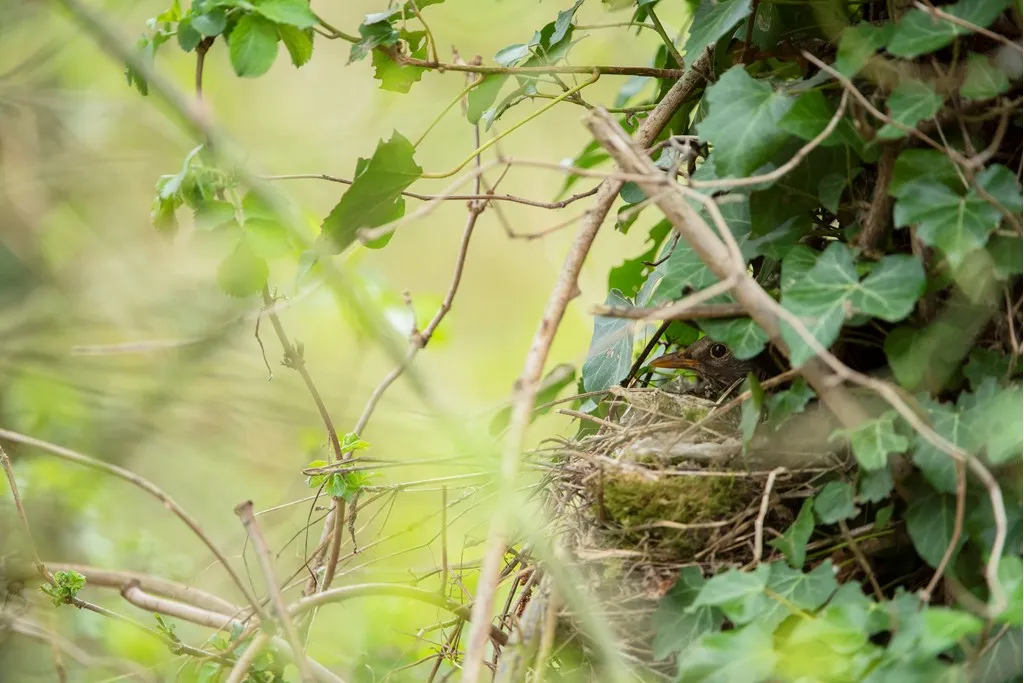
Notorious for their explosive song, male Wrens are extremely hard workers when it comes to the pursuit of a partner. A male Wren will begin to build multiple nests from which the female bird will select her favourite. The female will begin working on lining her preferred nest, where she will lay five or six eggs on average. The male's extra efforts don’t go to waste, as he will often raise multiple broods with multiple partners!
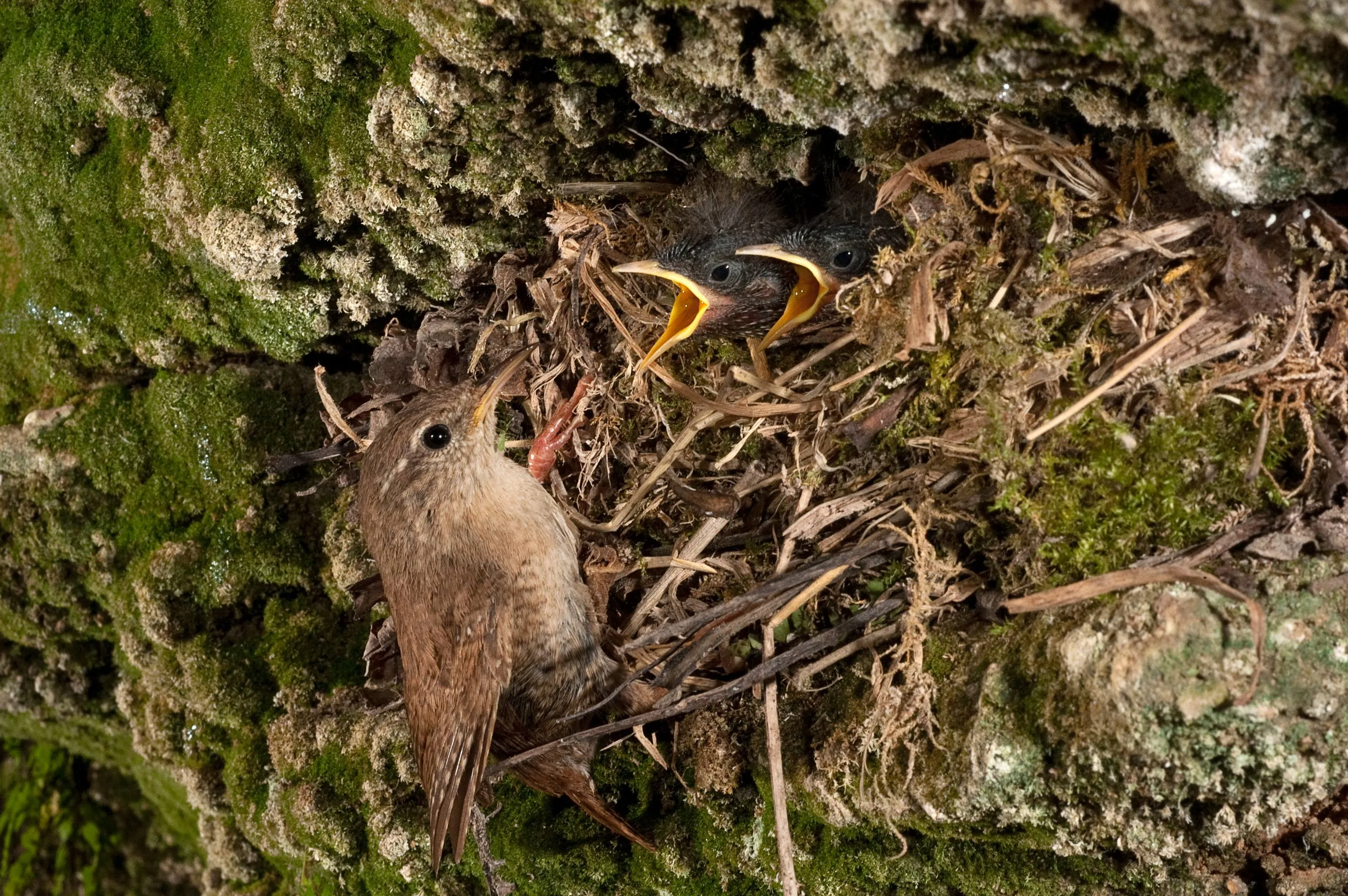
Despite being a somewhat inconspicuous bird on sight, the Dunnock is known for its unconventional approach to raising a brood: they’re famously not faithful to their mate. Males will often pair up with multiple females, but more unusually, females are known to partner with two males at the same time to benefit from multiple males provisioning her nest! They usually produce four or five eggs. To secure hatching success, Dunnocks copulate most frequently out of all small birds studied, with pairs often mating twice every hour over a 10-day period! It’s like 50 Shades of Grey (and brown!)
Despite discovering Dunnocks are not closely related to sparrows, they are still affectionately nicknamed ‘the hedge sparrow’, due to their preference for nesting in our hedgerows. While it isn’t illegal to cut your garden hedges throughout breeding season, it is illegal to ‘take, damage or destroy the nest of any wild bird while it is in use.’ As many birds use hedges as nesting habitat, it’s essential to take extra care and follow our advice (Hedge cutting and nesting birds - The RSPB magazine uncovered - Our work - The RSPB Community) when pruning from March to September, during the breeding season, to avoid any accidental disturbance. Intentional disturbance can result in an unlimited fine or up to six months imprisonment.
We’re also campaigning for Government to reinstate previous protective laws for our farmland hedgerows during breeding season – join us and take action now! (Help Our hedgerows! (rspb.org.uk))
.jpg)
Goldcrests, along with the closely related Firecrest, are the UK’s smallest birds. Weighing the same as a 20-pence piece, these tiny birds are susceptible to the cold weather, and it’s thought that eight out of ten Goldcrests die each winter. Consequently, large clutches are essential for the success of the population, and female Goldcrests can lay up to 12 eggs, weighing one and a half times her body weight!
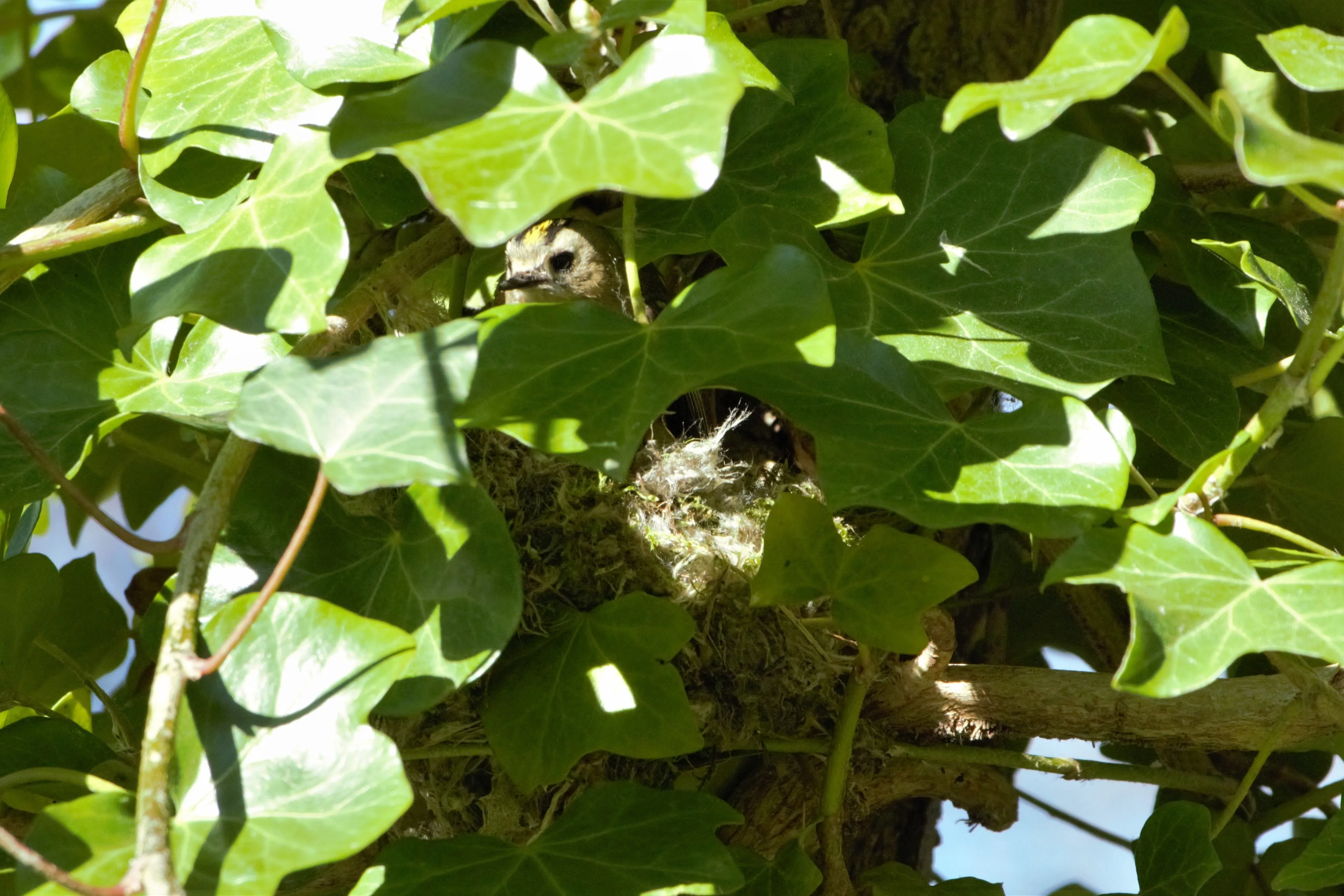
Swifts arrive on our shores in May after completing a speedy (travelling at roughly 70mph!) migration from Africa. One BTO-tracked bird completed its migration and arrived in the UK after only five days of travel (Tracking Swifts | BTO - British Trust for Ornithology)! Swifts are faithful to their nesting sites, and upon arriving, they’ll meet their partner who they’ll usually stay loyal to for life. Often nesting in the eaves of old buildings, Swifts are facing severe declines due to a lack of crevices in modern structures. Swifts are short-stayed visitors, only rearing one brood while on their breeding grounds. Therefore, they must make their journey worthwhile. Why not give them a helping hand and fix a wooden Swift box to your house? Peruse our shop for a premade option! (RSPB Swift nest box - Garden bird nest boxes)

Robins are famous for following around gardeners, waiting for a spadeful of overturned soil to reveal a bounty of bugs. Their confidence around humans makes them one of our most beloved feathered friends, and their nesting habits are often reflective of how well they’ve adapted to live alongside us. Robins’ nests have been found in plant pots, car bonnets, in a plane engine and apparently even in a (deceased) human skull! Despite their placid behaviour around people, male Robins are extremely territorial, defending their patch sometimes until death. They’ll lay around four or five eggs and have two or three clutches throughout the spring and summer months.
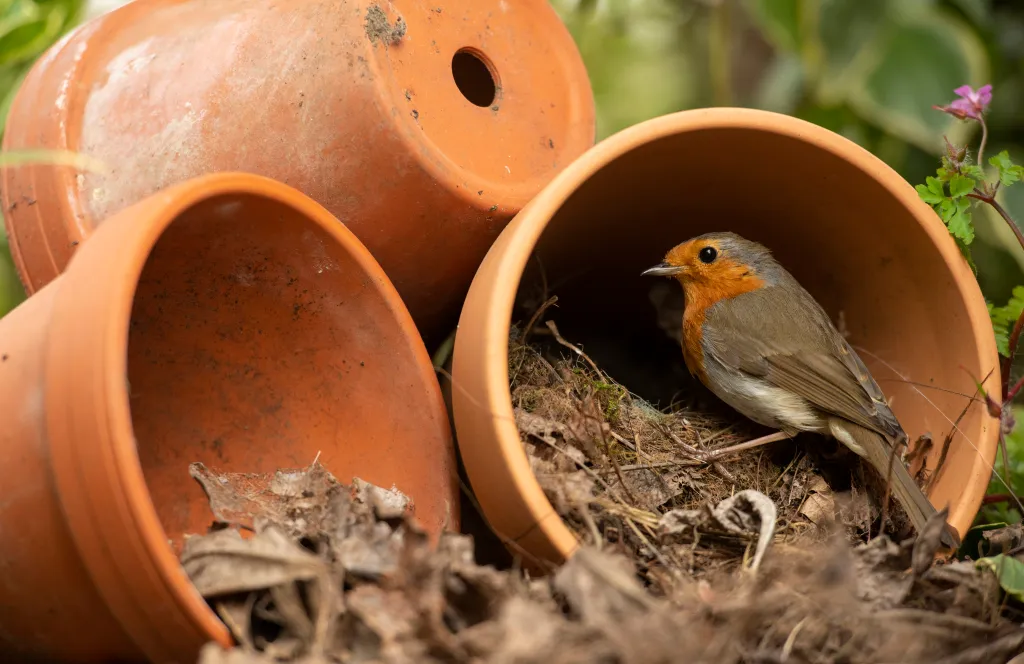
Blue Tits produce famously large clutches and have been known to lay up to 16 eggs! However, they will only lay one clutch per year, which they synchronise with the emergence of caterpillars. The female builds the nest with little input from her partner, and she will often choose a location near a tree, which will make the many hungry beaks easier to feed. Baby Blue Tits can eat up to 100 caterpillars per day each! With our changing climate, caterpillars are beginning to emerge earlier than they have historically, and while Blue Tits are adjusting to nesting earlier, they’re not keeping up with the pace, which poses problems for their populations.

Did you know that Woodpigeons feed their babies ‘milk’? Rather than making up a bottle, both parent birds will begin to produce a milky-like substance, loaded with antioxidants and protein, in their crops – a small muscle pouch used to grind and store food. They will feed the chicks their ‘pigeon milk’ for the first few days of their lives before they are able to digest other foods.
Unlike our other garden visitors, the Woodpigeon has been known to nest in every month of the year, not just in spring and summer. Woodpigeons aren’t picky about where they choose to nest. Generally, a brood will contain only two eggs.
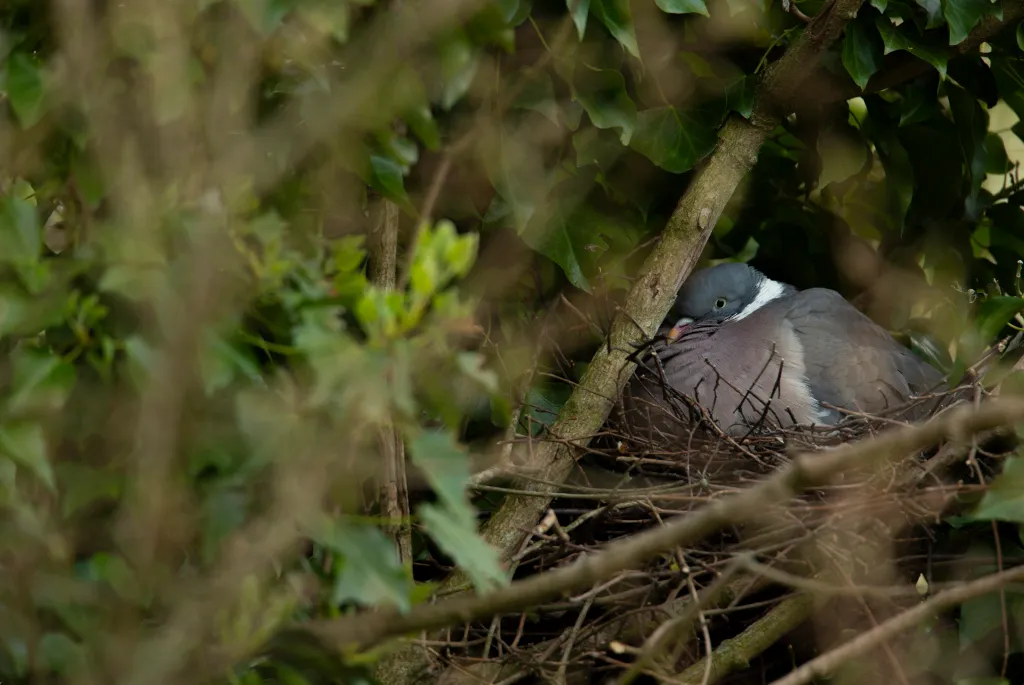
While the parents’ precious cargo is usually hidden well out of sight, it’s not unusual to see remnants of eggshells once a chick has been hatched or if a nest has been predated. Remember, it has been illegal to take any birds’ eggs from the wild in Great Britain since 1954, and since 1981 it has been against the law to possess the egg of any wild bird.
However, if you do find an egg on the ground, you might wonder who it belongs to. Here are some top tips on narrowing down the possibilities:
The more camouflaged an egg is, the more likely a ground-nesting bird laid it. Meanwhile, if an egg is lighter in colour (blue, green, white), it’s likely to have been laid in a tree.
Over the years, there have been many theories about why birds have different shaped eggs. Recently, scientists have discovered that the shape of an egg is linked to the bird’s flying habits! A purpose-built computer programme called the ‘Eggxtractor’ helped Professor Stoddard and her team to measure an enormous amount of eggs in order to draw a conclusion. They found the more elliptical an egg is, the higher a bird’s Hand-Wing Index (a measure of their wing length and flight efficiency) is. As a general rule, the more pointy the egg, the better the flier! Pointy Wings, Pointy Eggs: Birds' Flight Abilities Influence Egg Shapes (forbes.com)
As our baby birds take their first flaps, it’s not uncommon to see fledglings (fully feathered chicks) on the ground. While this may look like a cause for concern, this is an essential part of the bird’s development. They will still be being tended to by their parents while they branch out and explore the world outside of the nest.
If you do find a fledgling on the ground, it’s essential that it is left alone and not moved if it isn’t injured or in immediate danger. It may look like the fledgling has been left unattended, but the parent bird will be in the vicinity, keeping a close eye. Baby birds taken into captivity have much lower chances of survival. As a conservation charity, the RSPB does not have the facilities or the expertise to care for sick or injured birds. For more information, and extra advice on caring for a sick or injured wild bird, visit Who should I call if I am concerned about a bird? (rspb.org.uk)